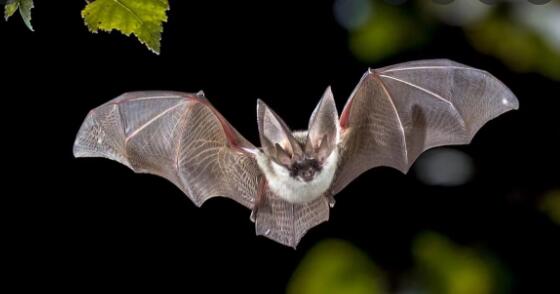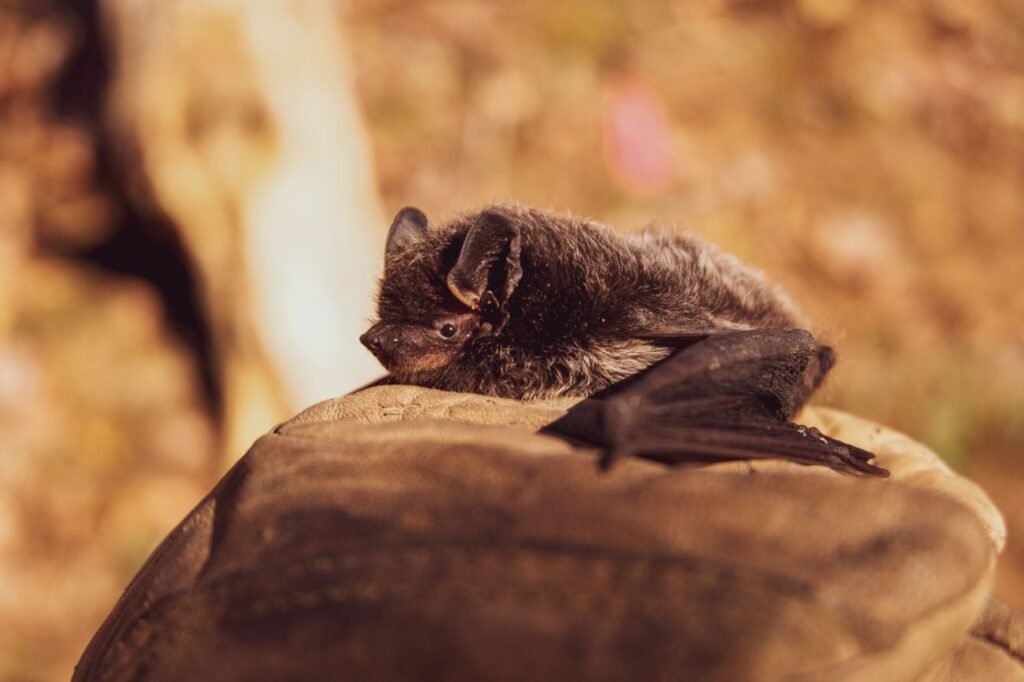Although they can be a useful resource and are an important component of the planet’s ecological system, bats become a problem when they decide to live in your attic. You should take swift but cautious action to remove bats at the first indications of an infestation because bats pose a threat to your health and the stability of your building. Please carefully read this article if you’d like to learn how to get rid of bats in your house.
What Is A Bat?
Mammals with fur-covered bodies, warm-blooded, and able to give birth to live young are bats. Mothers give milk to their newborn children. Only bats are true flyers among mammals.
Bats are able to live in a wide variety of habitats depending on the species. They inhabit cities, suburban areas, caves, deserts, and even wooded areas. They make their homes (which are called roosts) in a number of different structures. They use bridges, trees, caves, and building cracks. The attic in your home might even be home to a colony of bats.
It’s a common misconception that bats live in caves, despite the fact that this may be the case for us.
Megabats are not only nocturnal; they frequently roost in trees. They’re crepuscular animals — meaning that they’re most active during twilight hours. Microbats are primarily nocturnal, though they do frequently live in caves, crevices, and other places that provide cover during the day.
Why Should Bats Be Removed?
Bats eat about 1,200 insects the size of mosquitoes per hour, according to the U.S. Fish and Wildlife Service. In fact, some types of bats spread seeds, pollinate flowers, and eat beetle and other insect populations that wreak havoc on agricultural crops.
While these helpful animals can be beneficial to the environment, when they enter your home, they pose risks to your home and health. The following bat issues could arise indoors:
- Risk of rabies: Homeowners who come into contact with bats run the risk of contracting the painful and fatal disease rabies. Bites, scratches, and even holding bats can cause rabies.
- Unwanted allergies: Some people may experience allergic reactions from residing in a home with bats, such as asthma and congestion.
- Damage to your home’s structure: Guano, the droppings left behind by bats, can seriously weaken the structure of your home by consuming nearby wood and other building materials.
- Histoplasmosis risk: The fungus that causes this infection is inhaled through the droppings of unwanted birds and bats. Fever, coughing, and fatigue are a few of the symptoms that can persist for weeks or even months. Large amounts of bat feces should be cleaned up by professionals, according to the Centers for Disease Control and Prevention (CDC).
- Unpleasant odor: Guano can develop a strong odor over time, making it difficult to live in your house.
It goes without saying that you shouldn’t let bats stay on your property. Even a small number of little brown bats have the potential to multiply into a few hundred individuals over time, leaving behind a buildup of guano.
Professional Bat Removal

A good option is a professional care if you have a larger bat infestation or persistent re-entry. Pest control companies use a technique called exclusion because using pesticides on bats and exterminating them is prohibited. With one-way doors, the exclusion is intended to block the main exits that bats use. This prevents the bats from returning and lets them fly away safely.
Timing Bat Exclusions
Timing is crucial when using bat exclusion. One pup can be born per season for female bats at any time between May and August. (The one positive aspect is that nursing mothers can consume up to half their body weight in insects in a single day.)
The exclusion must be carried out either in the spring before the pups are born or in the early fall, just before the young bats depart for hibernation after they are able to fly.
Identify And Fortify Entry Points
Regardless of how many bats are roosting in your house, they will all enter through a few specific points. Install one-way doors to stop re-entry after you’ve identified their main exit. The used devices will stay in place for a couple of days—or longer if the weather is bad and the bats stay inside—before being taken out and sealing the entry point.
Inspect And Clean Affected Areas
Dust, potential diseases, and insulation fibers in your attic or eaves must be avoided by your pest control team. Professionals frequently don booties, goggles, gloves, and HEPA face masks when removing significant infestations.
If your insulation has been compromised, the experts will quickly and completely remove loose-fill insulation using a high-power vacuum. From any previous habitats, every trace of the bats must be thoroughly removed.
Seal Gaps And Holes
The exterior of the home will be thoroughly searched by your pest control specialists for cracks and openings, with special focus placed on the ridgeline of the roof and any areas that might have appeared between clapboards or shingles.
Additionally, they might search the outside of the house for small brown streaks and tiny black pellets, which are indications of bat guano and urine.
Every possible entry point must be caulked except for the bats’ preferred exits with one-way doors because they can fit through an opening as small as 1 inch by 3/8 inches. Due to its flexibility and clear appearance after drying, silicone caulk is preferred as a sealant.
Given that bats like to frequent the same roosts every year, sealing up every entrance is essential for keeping them out.
Many businesses combine hardware cloth and caulk as a precaution to make sure that bats never again enter your home. Bats do not gnaw through wood, but rodents like squirrels and mice do. To ensure the durability of the bat-proofing, use wire cloth as a preventative measure. Hardware cloth can also be used to seal any vents in your attic, which might be a point of entry.
Enzyme Deodorizers
Pest control experts frequently use a stain cleaner and odor remover in areas where there was a lot of bat guano after completely removing the old insulation. The source of the smell can be broken down by specific enzymes.
In order to prevent bats from returning to their roost, the smell must be neutralized. Bats can live for 30 years and have excellent homing instincts. Every effort must be made to keep them from returning to a roost they may have occupied for years because of their superior sense of smell.
Restore Insulation
You’ll need to repair any areas that the bats or the removal procedure damaged after your bat problems are resolved. Starting with fixing or cleaning any exterior problems near their entry points and restoring any damaged insulation or wood in the attic are good first steps.
Install A Bat House

Bats will keep going back to a roost, particularly one that is well-established. Fortunately, giving them a new place to roost nearby can stop them from entering your home again. As a strong deterrent, you should place a bat house as close to the old “bat door” as you can because echolocation can point bats directly to their preferred points of entry.
Aim for at least 15 feet off the ground if possible; the higher a bat house is, the more likely it is to be effective. A few hundred bats can live in the cedar bat house, despite its small size.
If the bats have fully embraced the bat house as their new home by late spring, you should know. Then you can let them live happily in the same ecosystem and eat the pests that are around your house, which are their preferred food sources.
DIY Bat Removal
We advise hiring a professional in the majority of cases to prevent disease and property damage because bats pose a serious risk to your health and home. To cut costs on pest control, some homeowners would prefer to try DIY bat control. Here’s how to get rid of bats around the house:
- Research the law: Unlike experts, you most likely don’t know whether removing bats is legal in your region. Determine whether bats are a protected species and what removal methods are permitted in your area by consulting your local and state laws. On whether and how to remove bats from your home on your own, local wildlife control may also be able to advise you.
- Determine the type of bat: Little brown, big brown, and pallid bats are the three species of bats that inhabit homes the most frequently. The exclusion period you must observe will depend on the maternity season of each individual bat.
- Establish entry points and seal them: Bats can enter your home through a variety of places, including chimneys, vents, loose shingles, the ridge cap of your roof, and the eaves of your house. If there is no obvious bat entrance, damaged exterior elements like warped boards and loose siding may also be to blame. Use a one-way tube on the entry point once you’ve located the bats’ entry point so they can exit but not reenter. Last but not least, caulk any additional openings they might be using to enter.
- Cleaning: Now is the time to put on safety gear, such as rubber work gloves, sleeves, booties, and an N95 respirator. Before cleaning with detergent or non-ammonia soap, you should mist the area with a solution of water and bleach. After rinsing, clean once more with a bleach solution. Any porous items, such as rugs, clothing, or fabrics, ought to be thrown away and removed from the house.
It might be worth hiring a professional pest control service if you have several bats, a lot of bat guano inside your house, or a problem with bats returning each year.
How To Prevent Bats Return To Your Home?
Some bats stay at the same roost for multiple years. Preventative exclusion is the best measure you can take to keep bats out of your house. Because they are not gnawers like rodents bats only enter your home through already-existing openings.
A further defense against bats is to keep outdoor lights off at night. Insects are a major source of food for bats, and the lights will draw them.
Bats consume a lot of water, so if at all possible, try to reduce the number of water sources near your home to avoid having bats and other wildlife become a problem.
Bats are beneficial to have around, though not in your home. Bats will help control the insect population around your home, and they also pollinate a variety of crops and flowers that we use on a daily basis.





